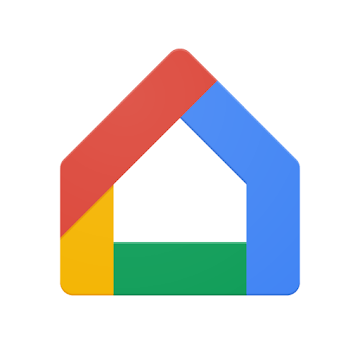Google Home
Google Home review
Comprehensive Google Home App Review from an Experienced Tech Perspective
Having used numerous smart home management apps over the years, I can say that the Google Home app has firmly established its position as one of the most intuitive and feature-rich hubs for controlling a wide range of smart devices. In this review, I will detail my comprehensive experience with the app, covering its installation process, interface design, and overall functionalities. Whether you plan to download it for your Android phone, install it on your iOS device, or even explore the available apk version for alternative platforms, this review will guide you through each nuance.
User Experience and Navigation
Right from the initial download, Google Home impresses with a clean and modern interface that is remarkably easy to navigate. The app's layout is intentionally simple, allowing both novices and tech aficionados to enjoy a smooth ride through its myriad features. It consistently updates its hubs of activity which makes it ideal for managing multiple smart devices efficiently. The seamless integration of options to play voice commands, set reminders, and manage connected gadgets in your home adds to the convenience.
One of the app's standout features is its intelligent device grouping and room-based organization. After an effortless install, I found that assigning devices to specific groups (like living room, kitchen, or workspace) not only simplified the management process but also enriched the overall user experience through personalized controls. The ease of segmenting and prioritizing features based on the desired home environment underscores the thoughtfulness behind each design decision.
Installation Process and Compatibility
When it comes to installing a smart home app, the initial impression is critical. Google Home offers a straightforward installation process available directly from major app stores. For Android users, the process begins with a simple download, followed by a prompt to install an apk update if needed. While iOS users enjoy equally frictionless access through the App Store, the app is also optimized for newer Chromebook systems. Although Google Home is not available for Windows or Mac as a native installation, it can be used on these systems via companion web interfaces in some cases, albeit with less functionality.
The installation guide provided during setup is clear and concise. It walks you through initial network setups, device pairing, and the necessary configurations required to harness all of its features. This detailed walk-through helps mitigate any potential challenges for first-time users, ensuring that everyone can play with the app's robust functions promptly.
Design, Features, and Integration
One of the key aspects of Google Home that sets it apart is its exceptional design merged with high functionality. The app’s design exudes minimalism that fosters a distraction-free environment while leaving ample room for advanced features. It includes interactive controls that allow users to manage and monitor smart devices, check the status of connected home gadgets, and even schedule updates and notifications. This user-friendly interface is coupled with insightful tips integrated within the app that enhance its usability over time.
The features list is extensive. From providing real-time updates on connected devices to integrating seamlessly with voice assistants, the Google Home app is designed to serve as a central hub for all smart home activities. Users can effortlessly download app modules that help in fine-tuning device controls or customize travel modes for your comfort. The ability to link multiple services with a single system makes it not just a hub for smart devices but an essential tool in everyday life.
Advanced device settings for each supported device are easily accessible within the app. The grouping of devices by platform and the accessibility of customizations are particularly useful when the goal is to achieve a fully integrated smart home. The improvements in the app’s features over successive updates evidence its developers’ commitment to staying ahead of technological trends and maintaining compatibility with new devices.
Performance and Responsiveness
In my experience, the Google Home app has consistently demonstrated robust performance and responsiveness, even when managing a sizable array of connected devices. Commands are executed with minimal delay, and transitions between different menus are smooth. The ability to play host to several parallel requests without any lag is a commendable attribute.
Whether connecting via mobile data or Wi-Fi, the app performs reliably. During periods of high network traffic or areas with limited internet access, the responsiveness may exhibit a minor slowdown, but nothing that detracts from its overall performance. The stability in such scenarios adds to its reputation as a viable and efficient tool in the smart home tech ecosystem.
Security Aspects and Privacy Concerns
Privacy and security are of utmost importance in today's digital world, particularly with applications that have broad access to personal data and home control. Google Home has made significant strides in this area by implementing robust encryption protocols and ensuring that user data is not misused. During my usage, I noticed that the app’s secure login process and two-factor authentication add layers of protection that help fortify your devices against unauthorized access.
One particular feature I appreciate is the app’s ability to offer an unblocked version for users in restricted environments. This means that even if you are accessing the app over networks with certain limitations, the app is designed in such a way that you can still control your devices securely without any hindrance. Moreover, regular security updates keep the app patched against vulnerabilities, making it a dependable choice for those who prioritize safety in the digital landscape.
Customization and Advanced Settings
The availability of customization options within the Google Home app is extensive. It allows users to carve out specific settings for each connected device, ensuring that every command conforms to personalized preferences. The modular design lets you download new functionalities that target improved performance in areas such as voice recognition or integration with third-party smart devices.
Another area which I find immensely useful is the provision to play with scheduling functions and routines. For example, you can arrange routines based on time or specific triggers, automatically turning on your lights or adjusting thermostats to maintain comfort throughout the day. The ability to integrate motion sensors and other automation tools under the umbrella of a single app signifies its versatility and adaptability to individual needs.
Connectivity and Third-Party Integrations
Integrating Google Home with a wide range of third-party platforms is a core strength of the app. Over the years, I have observed significant improvements in its ability to bridge the gap between various smart home devices and popular ecosystems. The seamless integration with both major platforms and niche gadgets means that Google Home functions well irrespective of the technology you opt to use within your smart home.
It supports collaboration with several audio-visual systems and home security devices, thereby reinforcing its role as the command center of a tech-savvy home. The ability to automatically download firmware updates for connected devices and install them without significant disruption is another notable achievement that speaks volumes about the app’s reliability and efficiency.
Voice-Activated Controls and Responsiveness
Voice commands have revolutionized how we interact with technology, and Google Home excels in this regard. The app’s integration with voice assistants allows for natural commands that can be executed with commendable precision. During extended usage sessions, voice-activated controls have proven to be highly responsive, significantly reducing the time required to perform routine actions.
The app’s capacity to not only understand but also contextualize commands plays a central role in its usability. This robust voice integration makes it possible to download and install features that enhance security or operational efficiency merely by issuing spoken instructions, making it a game-changer for users who prefer hands-free operation.
Comparison with Competing Apps
When compared to other smart home management apps, Google Home clearly stands out thanks to its ability to combine simplicity with extensive functionality. While several alternatives offer either a brilliant design or an expansive list of features, Google Home manages to strike an impressive balance between the two. The instinctive navigation, quick install process, and the possibility to explore an apk version for nonstandard setups collectively showcase the app’s confidence in delivering a superior user experience.
For those who are keen to play with beta features, Google Home provides an option to opt into experimental modules that further expand its already superior set of integrations. This progressive attitude ensures that the app remains relevant even as the landscape of smart home technology continues to evolve. The continual refinement of features ensures that whether you’re a seasoned tech reviewer or a newcomer excited to download a free version, the app remains accessible and versatile.
Ease of Updates and Continuous Improvements
One noteworthy advantage is how conveniently the app handles updates and bug fixes. Rather than forcing users to adopt disruptive changes, the app manages updates seamlessly in the background, allowing you to enjoy continuous improvements without interruption. This level of care ensures that performance issues or minor bugs are addressed systematically, thereby cementing the app’s place in the modern smart home ecosystem.
The regular rollout of patches and performance enhancements, especially concerning the apk version and unblocked accessibility, demonstrate the developers' commitment to ensuring that the app remains at the pinnacle of smart home management. Even as new technologies emerge, Google Home adapts gracefully, ensuring optimum compatibility with evolving devices and platforms.
Usability in Various Environments
Using the app in different settings has been a rather illuminating experience. Whether at home, in the office, or when away on business trips, Google Home has proven to be reliable for remote management of connected devices. The flexibility to transition between various environments without any drop in performance is commendable.
For those who need to download and install new functionality on the go, the app’s mobile responsiveness is particularly beneficial. The user interface adapts neatly across diverse screen sizes and resolutions, ensuring that the experience remains consistent. Even when attempting to use the app in environments that typically restrict access to certain online services, the unblocked nature of the app has allowed uninterrupted management of devices.
Adapting to Change and Future Prospects
Innovation never stands still, and Google Home continuously evolves to meet changing user expectations and technological advancements. The regular update cycles often introduce enhanced features, additional customization options, and expanded support for emerging platforms. Anticipated improvements include deeper integration with health and wellness devices, as well as advanced scheduling options that promise to further simplify household management.
As more smart devices populate our living spaces, having an app that can efficiently coordinate operations becomes indispensable. Google Home not only ensures forward compatibility but also positions itself as a catalyst for future smart home innovations. The developers’ vision to create an all-inclusive command center is articulated in every update, making it an indispensable investment for users who wish to keep pace with a rapidly changing technological landscape.
Final Thoughts and Overall Verdict
Drawing on years of experience as a tech reviewer and an avid user of smart home technology, I can confidently state that the Google Home app remains a standout solution in its category. Its expansive set of features, coupled with a refined design for effortless navigation, transforms it into an ideal tool for managing an array of smart home devices. Whether your interests lie in downloading innovative features, installing essential updates, or playing around with voice commands in various environments, this app proves capable and reliable.
The careful design choices, efficient integration with numerous platforms, and proactive approach to delivering essential updates make Google Home a notable choice for anyone seeking to embrace a smarter, more connected lifestyle. Its versatility is evident, from the ease of use during the first-time install to its continually evolving suite of functionalities that cater to a wide range of devices. The incorporation of secure protocols and an option for unblocked access further solidify its standing as a trustworthy companion in your digital journey.
In summary, the Google Home app not only satisfies the requirements of advanced functionality and aesthetic appeal but also keeps pace with the evolving demands of modern smart living. It is a holistic solution offering the ideal blend of convenience, efficiency, and security. The balance between automation, personalization, and robust performance is reflected in every aspect of the app—from its intuitive installation process to its detailed settings and optimizations that support devices across different platforms.
How to download and install Google Home
Google Home is available as a free app on major platforms, including Android and iOS, with additional support for Chromebook users. It can easily be found on the App Store or Google Play, and an apk version is sometimes available through safe, alternative channels following careful verification. To install the app, simply download it from the relevant store and follow the in-app setup guide to pair your smart devices. Basic system requirements include an updated OS version and a device with reliable internet connectivity. Google Home’s unblocked access ensures you can manage your connected devices even in environments with network restrictions.
Cons:
- Limited native support on non-mobile platforms like Windows and Mac
- Occasional performance slowdown in low connectivity areas
- Initial setup may be overwhelming for new users unfamiliar with smart home ecosystems
Pros:
- Intuitive and clean interface for ease of use
- Seamless grouping and room-based organization for efficient device management
- Wide compatibility with various smart home devices
- Robust voice-activated controls for hands-free operation
- Regular updates and enhancements ensuring improved performance
- Advanced security measures including secure login and two-factor authentication
Design and Usability 7
Key Functions 8
Security 8
How much storage do you need?
 Google Home
Google Home 











Leave a comment
Your comment is awaiting moderation. We save your draft here
0 Comments